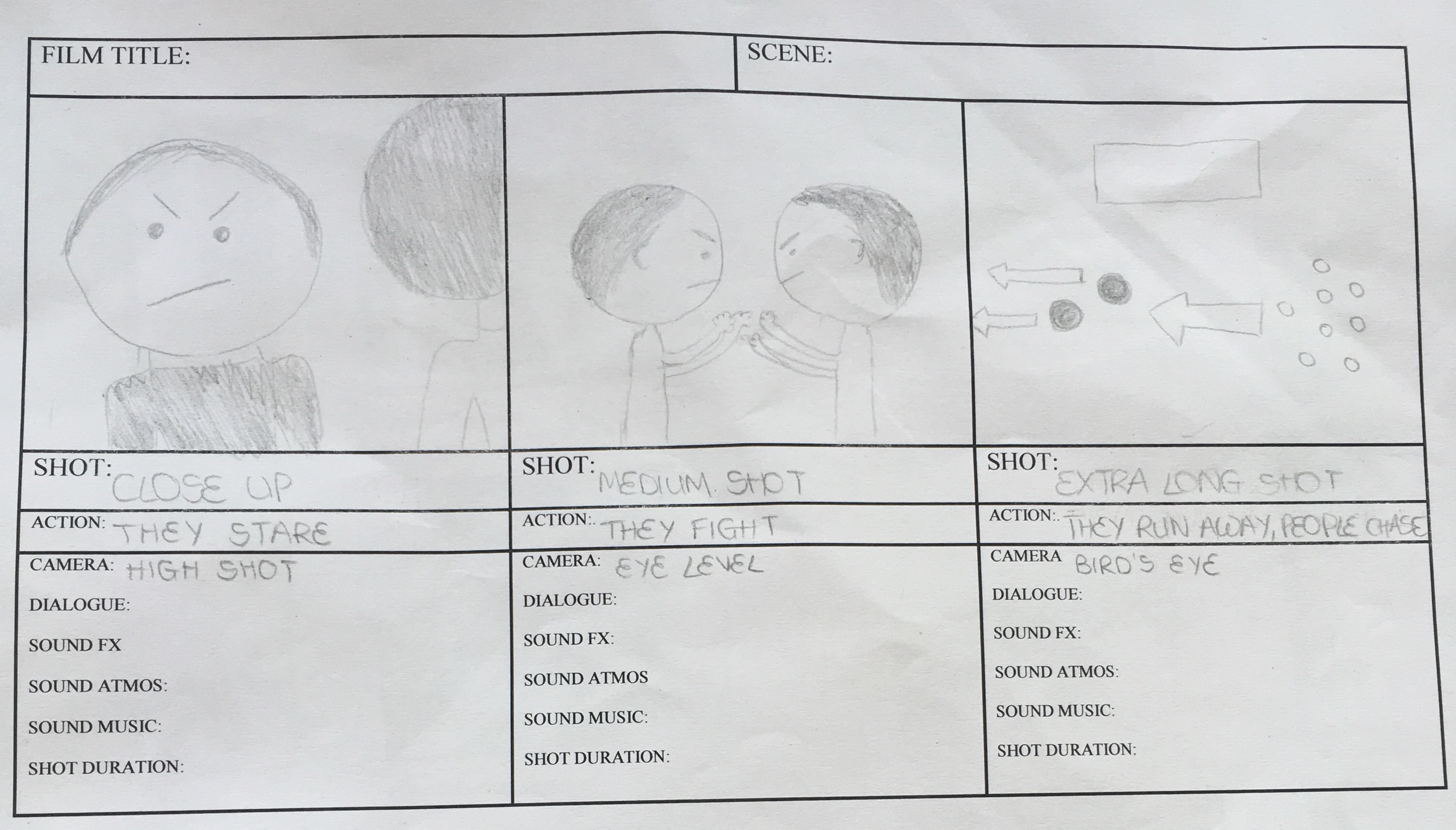A sound editor is in charge of the creation and insertion of the sound into specific parts of the film however the sound mixer’s job is to foreground or background the music / sound in order to create a a desired effect or to focus attention on a desired place.
Film Studies Blog Posting Checklist
1)Summer Induction Task “What Makes a Good Film? “
2)A trailer link which recommends a film to the whole group
3)Activity 1 – How the IB Learner profile fits with Film Studies
4)Activity 2 – Uncovering patterns using box office data
5)Activity 3 – Categorising the films into lists – remember to include director and date
6)Activity 4- Response to Spike Lee Cultural Viewpoint Task
7- 12)A post with your own examples of “Best Practice” for the following categories of Mise En Scene – Set Design /Costume/Hair and Make –up/ Colour/ Placing of Actors (composition) Objects within the frame
13)Find an example of a Long Take
14) Mise en Scene Bladerunner Task
15) Definitions of Cinematography/Cinematographer
16) Examples of Diegetic/Intra Diegetic/Extra Diegetic Gaze
17) Definitions of Deep and Shallow Focus and Examples
18) 3 shot distances and examples
19) 3 shot types and examples
20) 3 camera movements and examples
21) The Shining Cinematography Task
22) Whiplash Task Editing
23) The Kuleshov Effect
24) Difference between a Sound Editor and Sound Mixer
25) Dunkirk Sound Task
26) Hollywood History Slides
27) Citizen Kane Production Context (Task 1)
28) Citizen Kane Favorite Scene – Micro Elements (Task 2)
29) Citizen Kane Greatest Film Ever Made? (Task 3)
30) German Expressionism “The Cabinet of Dr Caligari”:Explain the ways in which the use of Mise en Scene, Cinematography and Editing may be regarded as innovative.
31) Soviet Montage “Strike” : How does the film use classic Soviet Montage Techniques to tell the worker’s story?
32) French New Wave “Breathless” : In what way did Godard consciously challenge the established conventions of Cinematography and Editing?
Sound Mixing and Sound Editing
Sound editing involves all of the film’s sound effects, including dialogue and sound effects. The job of the sound editor is to edit all of the audio of the film together after it has been recorded. On the other hand, the job of the sound mixer is to decide which elements of the sound to emphasise, and which to tone down. Sound mixing determines how the audience will eventually hear the film.
Use of Editing to create tension in Whiplash
https://vimeo.com/212470957
Whiplash (Chazelle,2014) is an intense and thrilling story that shows how far one can push themselves when faced with complete failure.
In this ending scene Andrew Neiman (Miles Teller) delivers the performance of his life after hitting rock bottom by utterly failing a song in front of a large audience, something that could potentially ruin his career.
Tom Cross used many different editing techniques to build the tension in the film so that the audience may understand the pain Neiman has been through and how much this moment means to him, as well as how unstable the relationship between Neiman and Fletcher (JK Simmons) is.
For example the use of continuity editing helps slowly build the tension without interruption, therefore the audience is never given a break from the tension. At 4:05 there is a sequence of shots – piano, brass section,woodwind section, piano, brass section,woodwind section, drums. These quick cuts to each different part of the orchestra along with the music constantly playing in the background helps build the tension because it puts the audience in the musicians place. It shows the complexity and difficulty of the song and shows how hard Neiman has worked to achieve this skill. The fact that now the band is performing in perfect harmony contrasts with the earlier scenes in the previous song in which Neiman was playing incorrectly and creates even more tension for the audience because they can know see that all his work has paid off and that this is his moment.
Additionally, the use of, what i assume is, colour correction to change the colour of the film to a red colour grade shows anger and passion, it reinforces the tension because it subconsciously emphasises the desperation and importance of that moment. It also reveals the intensity of the work and the difficulty that Fletcher has caused him in his life.
Furthermore, multiple establishing shots are used at 2:20 to show the whole orchestra in an impressive awe-inspiring way. This is done for two reasons;
- To show how much this performance means to everyone in the orchestra, it shows that it isn’t a rehearsal or a small “gig” at a bar. It reveals to the audience that this final performance is the one that their whole career has been leading up to.
- To establish the power dynamics in the scene; at this moment in time Fletcher is in control, the viewer can see that he is the conductor of the orchestra and because of this, all the instrumentalists are playing in harmony.However, later on in the scene Neiman is seen to be the main focus of attention. This is revealed through the use of close-ups of the drums and his face. Now it seems like Neiman is the conductor instead of Fletcher which furthermore creates tension between the two.
Finally, Cross uses eye-line matching to furthermore demonstrate the tension between Fletcher and Neiman. From 1:17 – 1:21 there is a sequence of shots of Their faces showing:
- Neiman’s determination
- Fletcher’s confusion.
Suddenly there is a hunt for power and a clash of determination between the two, the clash of both of their powerful motives creates unease as the audience doesn’t know who will end up victorious. This sense of unpredictability produces tension and continues to lead the audience towards a conclusion – gripping the audience in the process.
Whiplash: Editing
Whiplash’s final scene has been well edited by Tom Cross( Editor) by the direction of Damian Chazelle to build a scene full of tension. The use of cuts throughout build up the expectations each time while his use relating back to separate parts of the film bring up the tension consistently.
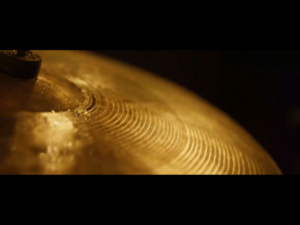
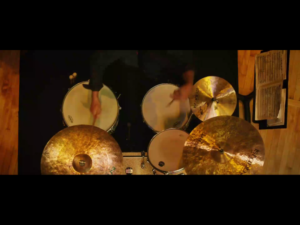
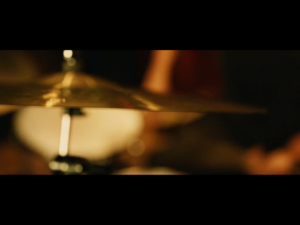

Tom Cross uses this cut and during 6 minutes and 16 seconds to 16 minutes 20 seconds to show tension by one cutting and the other flowing through the whole shot sequence very cleverly. This is done to build tension by the use of cuts showing he is still not perfect as the sequence is broken up, making the audience feel themselves something is still missing and so tension is built up. However at 6 minutes 16 seconds there is a smooth 4 second sequence with no cuts what shows him to finally reaching that level required as he is at his peak. The smooth transition between parts of the drum set shows this by not cutting indicating wasted movement moving between sets he is moving perfectly and on time as the transition is smooth. The tension is built up by the use of cutting as he is still not exactly timed to where its a smooth pan around the drum set showing him to be exactly well timed. It gives a better payoff to the audience as by that second sequence they see him in is own element.
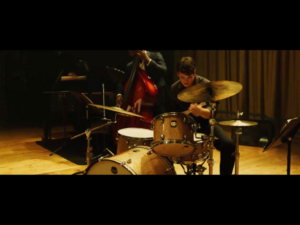
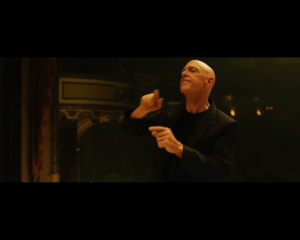
The switching between both character shows the pressure on both of them, so by the realization of Terrence finally achieving his goal there comes tension of not trying to ruin his own moment. While Andrew brings tension by not giving up on impressing the man who has abused him all movie. Tension is shown by them trying to achieve this personal goal of Terrence, making the audience feel its both their last chance of sucess but as well as showing them both enjoying the music for the first time in the entire movie as they are finally on the same page.
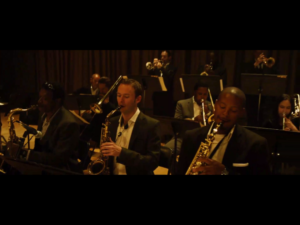
Cut to the band puts the pressure on Andrew as they are all in sync and perfect. The panning of the band when the scene cuts to them is cleverly done by Cross to indicate to things. Firstly indicates the pressure on Andrew by him having to staying in sync with the band who are all in sync together, while secondly it indicates the pressure what are on the band as they are all like Andrew however only appear in this scene. so this clever cut to the band is smartly done to show this to the audience that Andrew might be the focus point but he is not the only one performing.

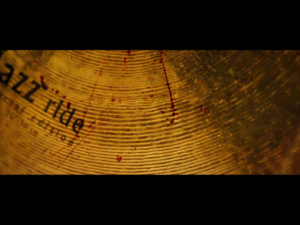
The cut to the bleeding hands build tension by this repetition of when Andrew bleeds he always fails due to his anger. This two shots are important in bringing back the tension by blood throughout the film being used to symbolize failure, so this is done to make audience feel he is slipping but instead he is actually finally overcoming the obstacle in his way. The blood also symbolizes how Andrew has learned to use the anger for Terrence into his skills and finally sees he way of teaching.
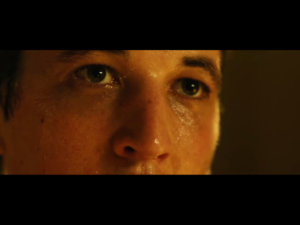
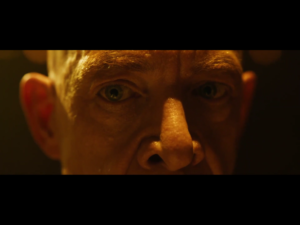
The eyeline match between Andrew and Terrence shows a conclusion as the tension finally ends as this is used to signify to the audience that both are finally happy with the performance and that their objectives are complete.
Whiplash editing task
The ending scene of Whiplash (2014, by Damien Chazelle) displays a wide varied range of editing techniques to fully immerse the audience within the film and keep them interested for the remaining time. A good editing technique used an eyeline match. This is used to show the intense gaze Fletcher is expressing, the shot later cuts to one of Andrew, showing that it was him who Flethcer was staring at. This is a powerful cut because it shows the real shock and almost awe of Fletcher which contrasts against his prior vile and aggressive characterstics. This contrast does not make us particularly like him, especially after what he put Andrew through; but the slight change in his personality expresses his true passion in coaching and how despite his abusive nature, he does care about Andrew’s success. This cut is significant to the plot because it adds more depth towards Fletcher’s character which helps solidify his importance within the fim. It also expresses his reaction as just as significant as Andrew’s by focusing on him as a parralel to Andrew. This has a profound effect on the audience because it shows the strong and extremely emotive impact Andrew has on Fletcher dspite his aggressive behaviour displayed earlier.
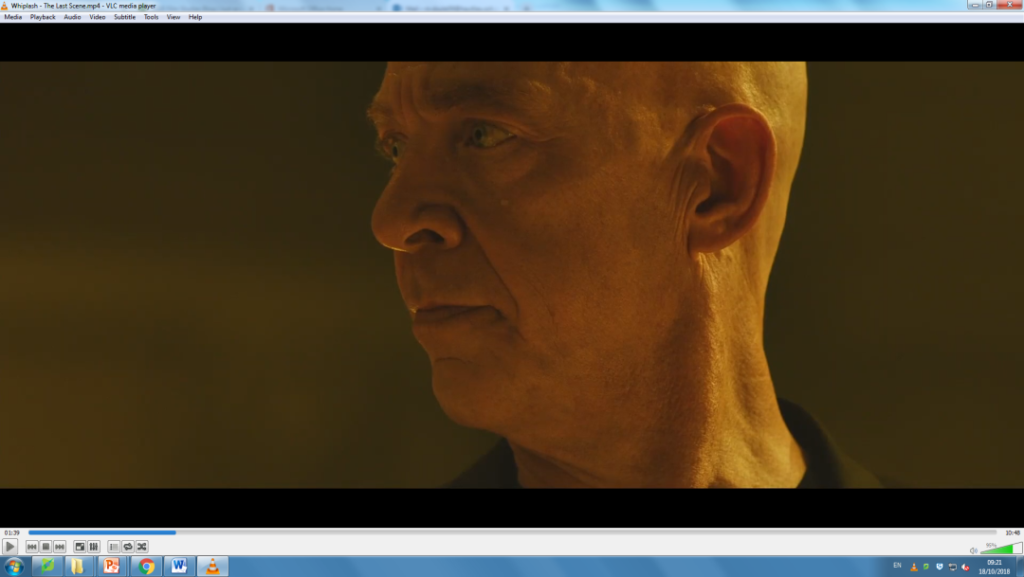
An establishing shot is used very effectively within this shot to unify the band as one. This is an interesting contrast against the prior restricted interaction only between Andrew and Fletcher, with the occaional singling out of band members to aesthetically please the audience. By showing the band as a group, we are reminded that despite Andrew’s success as the obvious protagonist of the film, the band requires unity and teamwork to work cohesively to produce the music. The shot is showed from both a right and left high angle shot, almost verging on birds eye view. I think that this would have a lasting effect on the audience because they are shown the stage as if it was perhaps a filmed musical performance opposed to a fictional film. This works well in ensuring versimilitude because we are shown different angles and aspects of the action to the point where we feel included in what is going on. Another thing to consider is the physical positioning of the band as a group contrasted to their separate closeups prior. This can reflect how Fletcher had set Andrew up, in hopes of humiliating him by having him play different music. At the start, the other musicians are shown only unified together whereas Andrew is only shown alone. But by this point, Andrew has begun to understand what Fletcher has done to him and fights back against it. This fully unifies the band together, which could be why they are positioned together for once rather than seperating into just the band and Andrew who is considered an outsider. This can have a very emotional impact on the audience who symphasize for Andrew
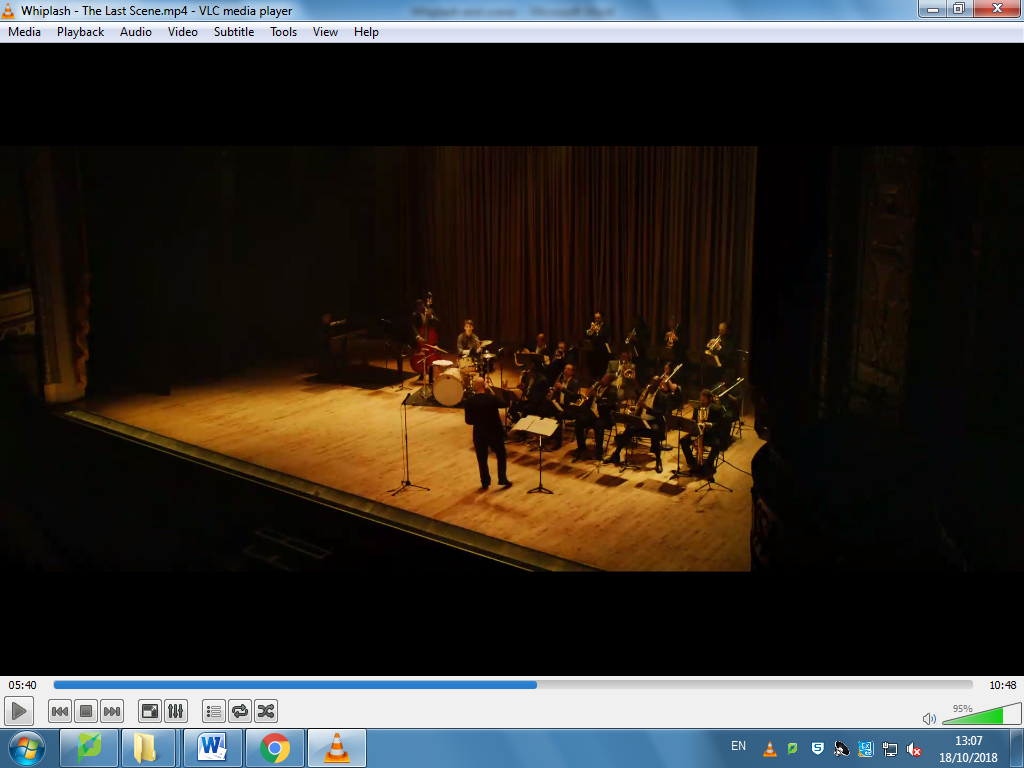
The scene opens with an extremely long close-up shot of Andrew’s face, which reflects the humiliation suffered at the hands of Fletcher. This is held for almost seventeen seconds, which is an awkward, considerably long length of time. This could be done to enforce Andrew’s uncomfortableness on the audience by forcing us to stare at his unamused demeanour for a while. This can be done to make us understand his character even further because; to a certain extent, we are experiencing what he is. This ensures great levels of realism and depth within his character because his issues are that of somewhat relatable which continues to make Andrew a likeable character which cements his protagonist role. I think that this shot would have an intriguing impact on the audience because although nothing happens, tension is built successfully as we are waiting for the moment where the camera finally breaks away from him. The shot is followed up by a dramatically short cut to the audience’s unamused and almost bored reaction at the whole climatic drama. This is done extremely cleverly to avoid giving away too much of Fletcher’s reaction to And rew, saving his later shock but eventual pride for him later on in the ending shot of the scene

An example of the Kuleshov effect is used to portray Andrew’s reaction at the audience’s disapproval about his embarrassment due to Fletcher. The shot begins with a solemn look at his face, which cuts to the audience looking extremely disapproved. This is followed by another cut to the same disappointed look across Andrew’s face. This shows the impact that the audience has on Andrew, indicating his strong passion for performing due to his sadness towards their negative reaction towards him. Most of the film is based around his desperate desire to be the best; this is reinforced in a heart-breaking way for the audience, as his facial expression reflects his true disappointment at Fletcher’s let down. However, this spurs on his desire to be better and come back fighting which impacts the audience who should have grown to appreciate his perfectionist attitude.
One of the most arguably best shots in the scene was the interesting montage of the musicians together. A crab shot is used to establish the musicians each in turn, visually displaying their significance as a united band. This promotes significant message of equality and team-work by individually recognising each musician. By expressing this shot as a montage, we can take our focus away from the deeply emotional scenes from Andrew and Fletcher, and rather instead focus on the other musicians who are shown. This can express the vital messages about equality in an interesting way which doesn’t break the tension because of how fast-paced the montage is. The mix of fast transitions and music helps speed up the atmosphere.

Shot reverses are also frequently used to build tension within the scene. These are used to convey the strong passionate feelings of Andrew and Fletcher by ignoring the disagreements that they had and actually uniting them together with a common passion. Their facial expressions successfully show the audience how passionate they are by switching from Andrew to Fletcher’s reactions. This is to show that despite Fletcher’s negative attitude and behaviour, everything he does is for a reason. The audience can understand this by seeing the clear passion evident in his reaction to Andrew’s drumming. This does not excuse his behaviour but rather lets us understand it, substituting his malevolent behaviour in favour for hard work expressed in the entirely wrong way. This technique is significant because it expresses the importance of emotion within the film by framing both men’s emotions clearly on stage. This contrasts against everything that has happened, suggesting that there is a reason for all of the hardship and despite how tough things get; success can be achieved. As the audience, we are observing the characters reactions and expressions opposed to their actions, implying that Andrew’s success is merely based form his own goals. Although his physical success of drumming is displayed, we are shown both men’s reactions to it; implying that their perception of the events are just as, and if not more important than the end goal. This is shown at the end to suggest that Andrew’s journey was worth the struggles because he finally achieved what he wanted. We can tell that both men are pleased and proud by the expressions on their faces, which are shown frequently and in comparison
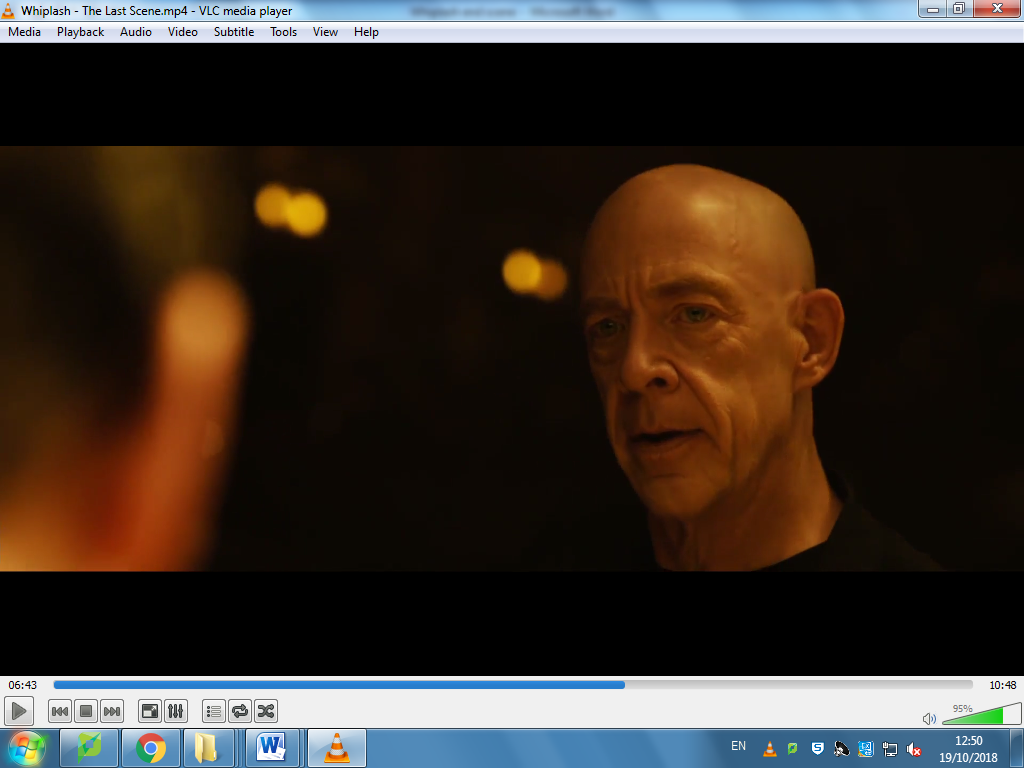
Towards the middle of the scene, a particular sequence shot is used to show the increased tension between Andrew furiously drumming and Fletcher conducting in response. The camera rapidly flits between both characters to show how hard they are both trying. It almost seems like a challenge, both unwilling to back down against the fast-paced fury. The shot represents the relationship between both characters extremely well, since the movements between the two are very quick and rushed; we get the implication that they are fighting for control of the band. This is highlighted by Andrew’s determined attempt to drum as best as he can compared to the wild flurry of conducting from Fletcher. This contrasts against the previous ideas of unity between the characters since their intense rivalry is highly on display here
An L cut is used towards the end of the scene to establish the significance of everyone else’s reaction to Andrew’s success. The shot begins with a long cut of Andrew playing the drums, then cuts to the astonished face of his father at the doorway. We can still hear the drums furiously beating in the background, which can represent his father, Jim’s final realisation of the fury, passion and dedication that Andrew has imposed upon his music. The shot is shown as a parallel to express how his father is involved yet on the side-lines when it comes to Andrew’s music, this is implicated by showing him behind the door but still able to listen to the music. This can represent that despite how Andrew’s obsession of the drums has even overtaken his family life; Jim is still involved. This is shown by allowing him to listen to the music, from a distance. We know that he is listening because of the crucial details of the L cut still presenting the music while he is in shot. On the flipside, there is also an element of seclusion. Although Jim can hear the music, he is on the other side. This is literally portrayed by positioning him behind the door. This suggests that the only thing between Andrew and his father is music, as although Jim is behind the door both literally and metaphorically, he can still hear the music. This suggests that he has now realised the importance of music within Andrew’s life as it is one of the only things connecting him to his son
In general, fast cuts are used frequently throughout the scene, mainly to retain a fast pace and high tension. However, as the scene progresses, towards the end; the cuts begin to slow down. This gives us the impression that the issue is beginning to get resolved as there is less fury and tension shown. However, just at this moment, everything rapidly speeds up. This contrast represents the whole pace of the film, where some moments are slow and deliberately drawn out whereas others are fast paced and full of action. By using such fast cuts, this makes the audience pay attention because if they look away, they could miss some of the action. This is an engaging technique because it ensures verisimilitude by fully immersing us into the world of the film. The last shots of the scene are very fast and frantic. This represents the desperation evident in Andrew’s drumming, hoping that he can finally succeed. The fast conducting of Fletcher matches the quick beat set by Andrew, uniting the two finally after everything they have been through. This is finished by a shot of Fletcher smiling at Andrew, proving that he has finally earnt the respect he was so desperate to gain throughout the entire film
whiplash editing task
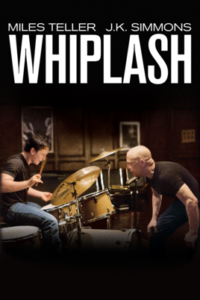
i am going to be analyzing the editing in the final scene of Whiplash (2014 , directed by Damien Chazelle) and in the final scene , Andrew Neiman gives a jazz performance and the editing helps to build the tension in the scene by using jump cuts to jump between the audience at the concert , the conductor , and the main character and these build tension because the shots are rapid.
During the performance the jump cuts are interspersed with quick cuts towards the rest of the band and this makes it clear to the audience that the entire band is feeling the same tension and pressure that Neimen is and this creates a parallel between Neiman’s struggles and the struggles of the rest of the band and it shows that they are feeling the same thing , this is a prime example of a montage and it makes the audience feel the intensity of the scene because of the rapid cutting between the images.
This scene makes liberal use of J cuts because when the camera cuts away from Neiman and focuses on the band , we can still hear him when he is not in the shot and this helps to create the sense that the band are a team who rely on each other and the fact that the images of the band and Neiman are constantly being inter cut suggests that Neiman needs the band and the rest of the band needs Neiman and it is suggested that without Neiman , the band would fall apart. Furthermore, there are moments throughout the scene where the camera cuts to closeups of Neiman and the conductor and this helps the audience to understand the intense pressure that Neiman is feeling and it shows how the conductor’s feelings towards Neiman are changing , initially , he is furious with Neiman but by the end of the scene he is pleased with Neiman and this is shown to the audience when he smiles at Neiman before cutting to the end credits and this action alone resolves a major part of the plot because Neiman is only trying to earn the conductor’s approval and this indicated he has earned it.
I believe that the editing builds tension by getting faster and faster throughout the sequence and this makes the audience pay more attention to what is happening in the scene because if they don’t pay attention , they could miss a pivotal plot point and the scene wouldn’t make as much sense. The editing techniques that are used in this sequence are engaging because they show the relationships and prospectives of the people who are involved in the scene and it shows how those relationships have changed over the course of the film – in short the end sequence of Whiplash is edited in such a way that the audience is given a miniature representation of how the relationships between the characters have changed over the course of the film – the relationships have gone from hostile to peaceful and it is suggested that Neiman will become successful.
https://vimeo.com › Em K › Videos
Editing – Whiplash
The final scene of the movie Whiplash(Chazelle, 2014) uses a wide range of different editing techniques. The movie’s editor, Tom Cross, does an incredible job creating several very tense moments throughout the movie using cuts, eyeline matches, cross cutting, cutaways and more.
Cross’ use of very fast cuts fills the scene with tension, and these quick cuts of the drum kit to the cutaways of longer sweeping shots of the brass section creates a sense of tension for the audience, knowing that Andrew must keep in time. The editing style of this movie is important as without it, the scene can become boring. The use of quick cuts keeps the viewer entertained and interested. The Editor manages to make sure these shots are not too jarring for the audience. For this reason, the editor has included longer shots to ensure the viewer doesn’t get confused.

The use of eyeline matches and shot reverses are also incredibly important for building tension and stakes for the audience. These techniques are used between Andrew and Fletcher several times in the final scene, and helps show the feelings behind the characters, both of which are using predominately facial expressions to convey emotion. The editor uses these shots when they are trying to get the audience to focus on the character rather than his actions, For instance; instead of focusing on Andrew’s drumming, it cuts to him looking at Fletcher, and then is followed by a shot of Fletcher looking at him. This helps build character, but also gives the audience a break from the intensity and fast paced cuts of the drumming to create a moment made to develop the characters.
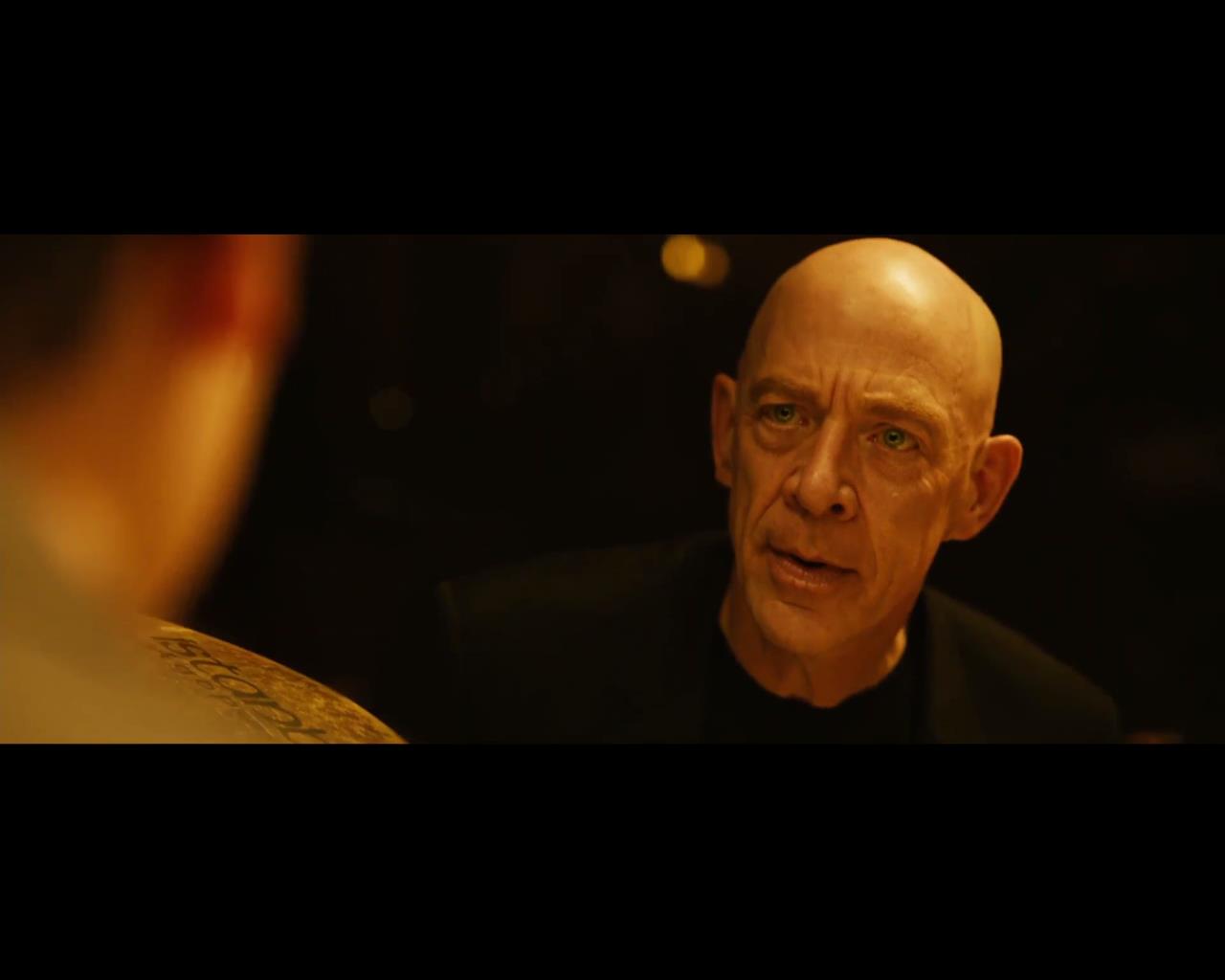
There is also the use of a sequence shot between Fletcher and Andrew where the camera quickly flicks between each of the character. While it is possible that this scene uses different, well hidden cuts each time the camera quickly changes direction, it helps visually describe the relationship between Fletcher and Andrew, it also creates an intensity for the audience as it seems like the characters are almost fighting for control over the whole band. This shot makes the viewer feel as though they are a part of the scene, as the nature of the shot is sequential, and therefore makes it seem more realistic for the audience.
This scene also has one specific instance of a cutaway. I find that this is an incredibly important shot for character development of Andrew, as it shows how even though he has alienated his friends and family throughout the movie, the shot of his surprised father through the concert hall window shows that there are still people that care about him and are proud of him for his accomplishments, as for a lot of the film, Fletcher has been a sort of father figure for Andrew. While this could be considered a fairly throwaway shot, I find that it has significant importance to the plot, once again showing how important the editor’s job is for almost every aspect of the movie. This shot in particular adds character more than the all of the writing in this scene combined.
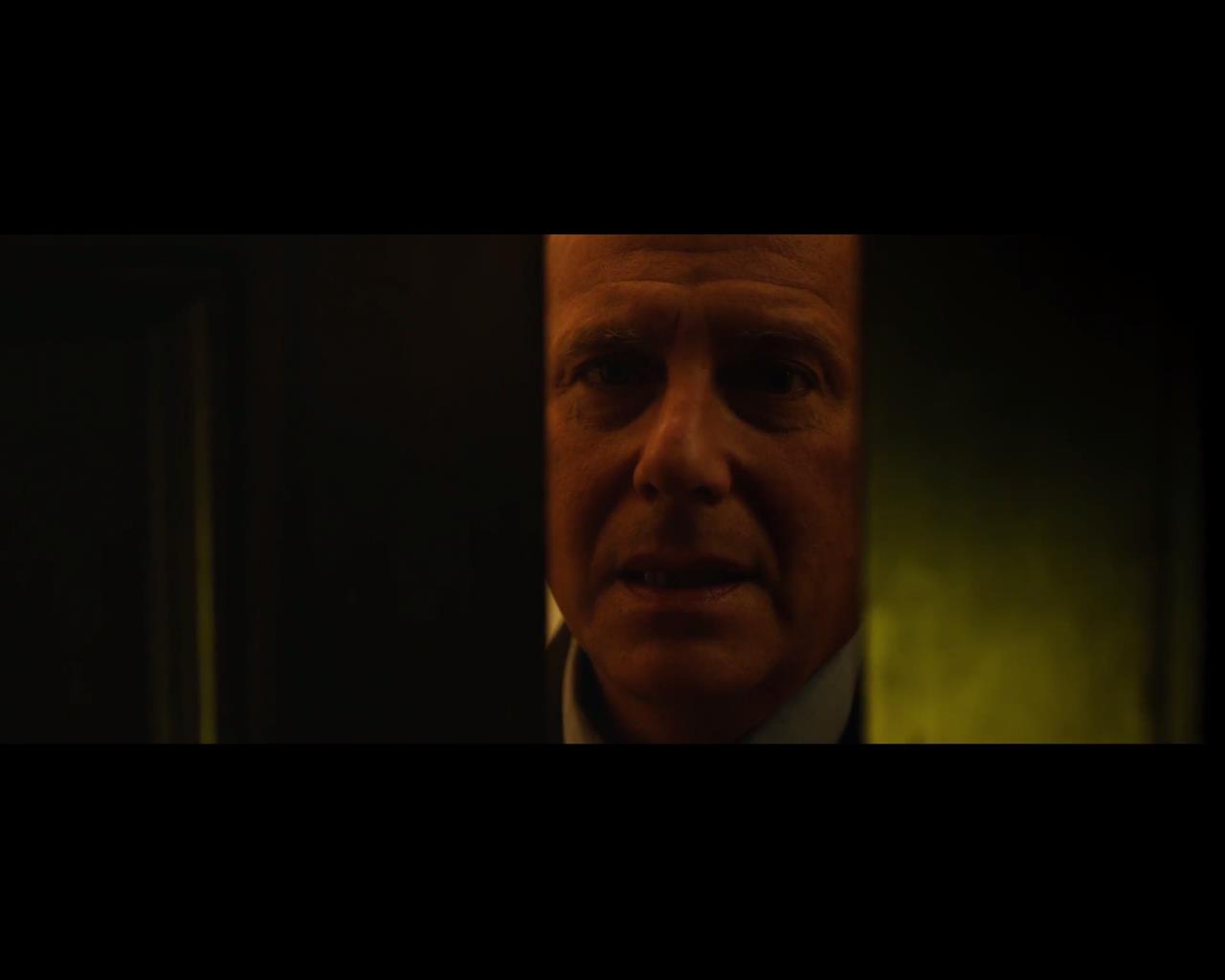
Sound Editing Vs Sound Mixing
A sound editor’s job is to assemble and put sounds together to create all of the sounds needed throughout the film including dialogue and sound effects as well as music, where as the sound mixer’s job is to edit and blend the sounds that the sound editor has put together, make sure they are at the right levels and volumes, to make sure it ready for the final product.
Storyboard

